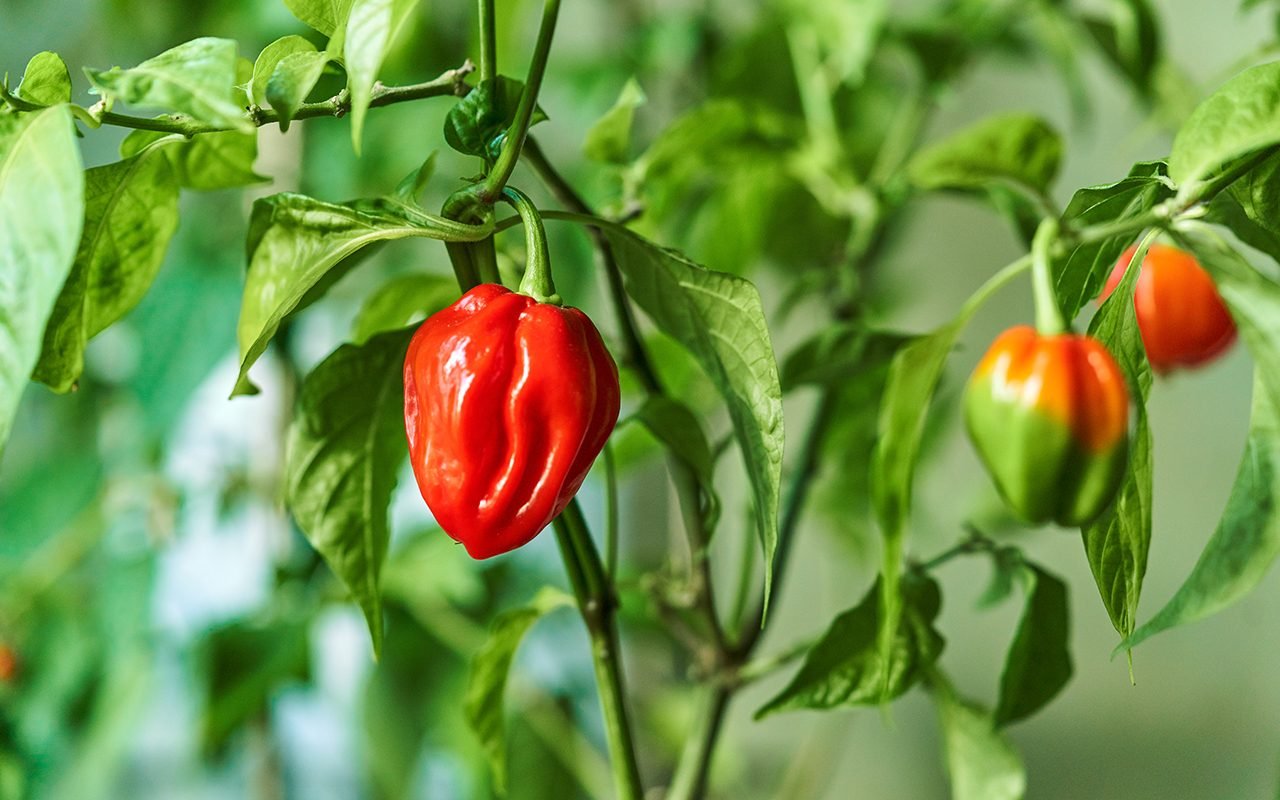Bell peppers are not only colorful additions to your garden but also versatile vegetables that can be enjoyed fresh or cooked in various dishes. Growing your own bell peppers allows you to enjoy the freshest produce while taking pride in nurturing your plants. In this article, we will explore valuable tips and tricks to supercharge your homegrown bell peppers, ensuring a bountiful harvest.
Pri Gardens Upside Down Tomato Planter, 2- Pack(Requires Plants,Soil and Fertilizer, not Included)
1. Choosing the Right Variety
Selecting the appropriate bell pepper variety is crucial for a successful harvest. Consider factors such as size, color, taste, and disease resistance. Popular choices include green, red, yellow, and orange bell peppers. It’s advisable to choose disease-resistant varieties to minimize the risk of pest and disease problems.
2. Starting Bell Peppers from Seeds
To get a head start on your bell pepper journey, start them from seeds indoors. Begin the process 8-10 weeks before the last frost date in your region. Sow the seeds in seed trays or small pots filled with well-draining seed-starting mix. Ensure the seeds receive sufficient warmth, moisture, and light for germination.
3. Preparing the Soil
Bell peppers thrive in well-draining soil rich in organic matter. Prepare your garden bed by loosening the soil and incorporating compost or well-rotted manure. This will enhance soil fertility and drainage, providing an optimal growing environment for your bell peppers.
4. Planting Bell Peppers
Transplant your seedlings outdoors once the risk of frost has passed and the soil temperature reaches at least 60°F (15°C). Space the plants adequately, giving each bell pepper enough room to grow and spread. Planting them in raised beds or containers can also be beneficial, offering better control over soil conditions.
5. Providing Proper Sunlight
Bell peppers are sun-loving plants and require at least 6-8 hours of direct sunlight daily. Choose a location in your garden that receives ample sunlight. If you have limited sunlight in your area, consider using reflective mulch or containers that can be moved to capture the available sunlight.
6. Watering and Fertilizing
Consistent watering is essential for healthy bell pepper plants. Keep the soil evenly moist, but not waterlogged, throughout the growing season. Applying organic mulch around the plants can help retain soil moisture and suppress weeds. Additionally, fertilize your bell peppers regularly with a balanced organic fertilizer to provide them with the necessary nutrients.
7. Managing Pests and Diseases
Like any garden plant, bell peppers are susceptible to pests and diseases. Implement preventive measures such as practicing crop rotation, removing weeds, and maintaining good garden hygiene. Monitor your plants regularly for signs of common pests like aphids, slugs, and hornworms. Employ natural pest control methods or organic insecticides if necessary.
8. Pruning and Training
Pruning your bell pepper plants can improve air circulation and promote better fruit production. Pinch off any suckers or lateral shoots that appear in the leaf axils. As the plants grow taller, you may also need to provide support by staking or using cages to prevent them from toppling over under the weight of the fruit.
9. Harvesting Bell Peppers
Knowing the right time to harvest is crucial for flavorful bell peppers. Generally, bell peppers can be picked when they reach their full size and have attained the desired color. Use clean, sharp scissors or pruning shears to cut the peppers from the plant, leaving a short stem attached. Harvesting regularly encourages the plant to produce more fruit.
10. Storing and Preserving
To prolong the freshness of your harvested bell peppers, store them in a cool, dry place or refrigerate them in perforated plastic bags. Alternatively, you can preserve bell peppers by freezing, drying, or pickling them. Each preservation method offers unique culinary possibilities and allows you to enjoy bell peppers year-round.
11. Common Issues and Troubleshooting
Bell peppers may encounter various issues during their growth, including blossom end rot, leaf curling, or stunted growth. Understanding these problems and their causes can help you troubleshoot and prevent them. Proper watering, adequate nutrition, and maintaining optimal growing conditions will minimize the occurrence of such issues.
12. Frequently Asked Questions (FAQs)
- Can bell peppers grow in containers?
- Yes, bell peppers can thrive in containers if provided with adequate space, sunlight, and proper care.
- How long does it take for bell peppers to mature?
- The time it takes for bell peppers to mature depends on the variety, but it generally ranges from 60 to 90 days from transplanting.
- What are some natural remedies for pest control in bell pepper plants?
- Natural remedies include using neem oil, insecticidal soap, or introducing beneficial insects like ladybugs or lacewings.
- Can bell peppers cross-pollinate with other pepper varieties?
- Yes, bell peppers can cross-pollinate with other pepper varieties. To prevent cross-pollination, separate different pepper varieties by distance or physical barriers.
- What is the best time of day to water bell pepper plants?
- Watering in the morning is generally recommended as it allows the foliage to dry before evening, reducing the risk of fungal diseases.
Conclusion
By following these tips and tricks, you can enhance your homegrown bell pepper cultivation and ensure a bountiful harvest. Remember to choose the right variety, start from seeds, prepare the soil, provide proper sunlight and water, manage pests and diseases, prune and train the plants, and harvest and preserve the bell peppers correctly. With patience and care, you’ll be rewarded with an abundance of delicious bell peppers straight from your garden.


